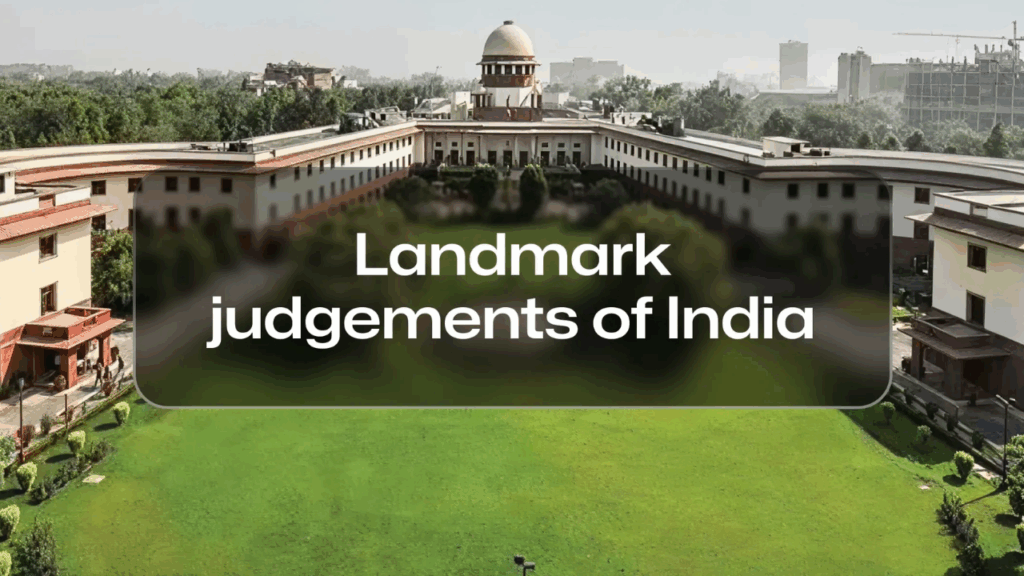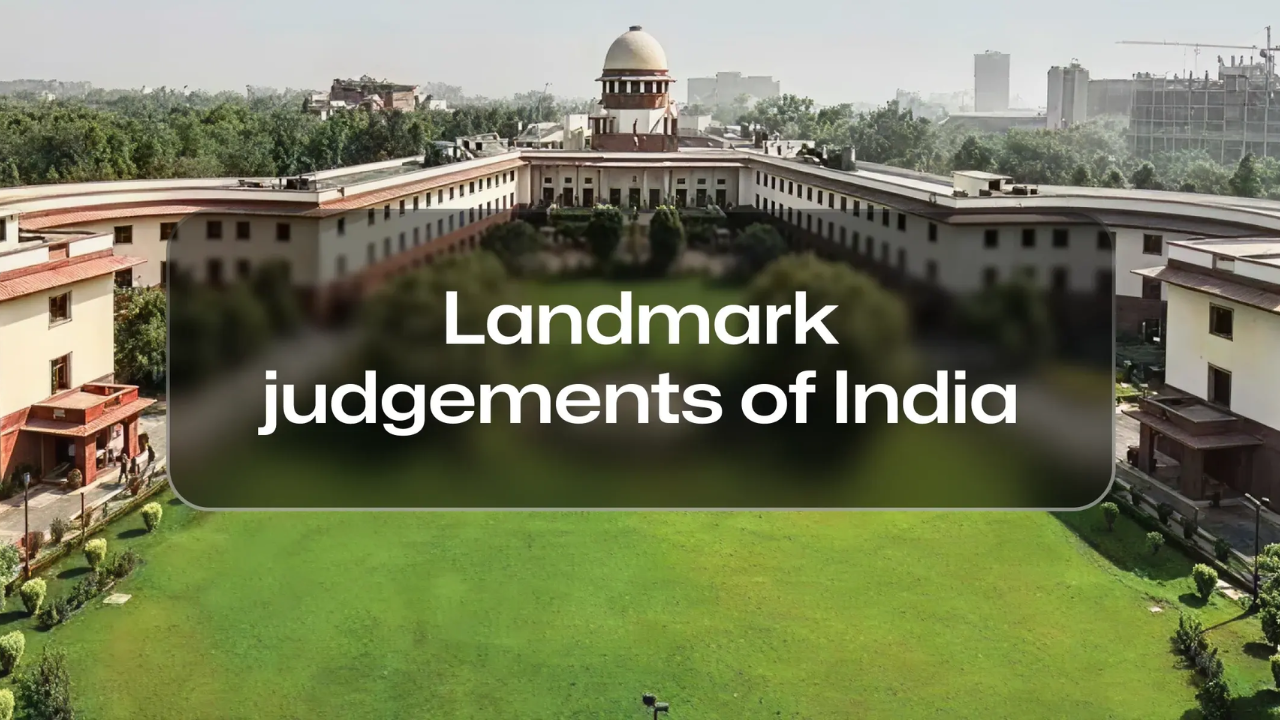
The Supreme Court of India has played a transformative role in shaping environmental law and governance. Through its landmark judgments, the Court has expanded the scope of Article 21 of the Constitution (Right to Life) to include the Right to a Clean and Healthy Environment. These rulings not only compelled governments and industries to prioritize ecological balance but also established global principles like Polluter Pays, Precautionary Principle, and Sustainable Development in India’s legal framework.
Importance of Judicial Intervention in Environmental Matters
India’s environmental challenges—ranging from deforestation and industrial pollution to climate change—required strong legal interventions, especially when legislative and administrative mechanisms proved weak. The judiciary filled this gap by:
- Ensuring accountability of industries and government bodies.
- Recognizing environmental protection as part of fundamental rights.
- Laying down guiding principles for environmental governance.
- Encouraging public interest litigation (PILs) for citizen participation.
Case Studies of Landmark Supreme Court Judgments
1. M.C. Mehta vs. Union of India (Oleum Gas Leak Case, 1986)
- Background: Following a gas leak from Shriram Food and Fertilizer Industries in Delhi, residents were exposed to hazardous chemicals.
- Judgment: The Court introduced the principle of Absolute Liability, making industries strictly liable for any harm caused, regardless of precautions taken.
- Impact: Strengthened industrial accountability and laid the foundation for stringent environmental regulation.
2. Rural Litigation and Entitlement Kendra vs. State of Uttar Pradesh (Dehradun Quarrying Case, 1985)
- Background: Uncontrolled limestone quarrying in Mussoorie hills caused deforestation, soil erosion, and landslides.
- Judgment: The Court ordered the closure of quarries, emphasizing ecological preservation over economic gains.
- Impact: First case where the Court balanced development and environment, introducing the concept of Sustainable Development.
3. Subhash Kumar vs. State of Bihar (1991)
- Background: The case highlighted pollution of the Bokaro River due to industrial discharge.
- Judgment: The Court declared that the Right to Pollution-Free Water and Air is a part of the Right to Life under Article 21.
- Impact: Strengthened citizens’ fundamental right to a clean environment.
4. Indian Council for Enviro-Legal Action vs. Union of India (1996)
- Background: Chemical industries in Rajasthan were found to be discharging toxic waste, contaminating soil and groundwater.
- Judgment: The Court enforced the Polluter Pays Principle, directing industries to compensate affected villagers.
- Impact: Established accountability of industries for environmental degradation.
5. M.C. Mehta vs. Kamal Nath (1997)
- Background: A motel company diverted the flow of the Beas River to protect its property, leading to ecological damage.
- Judgment: The Court applied the Public Trust Doctrine, declaring that natural resources like rivers, forests, and air are held by the state in trust for public use.
- Impact: Prevented privatization and misuse of natural resources.
6. Vellore Citizens Welfare Forum vs. Union of India (1996)
- Background: Tanneries in Tamil Nadu discharged untreated effluents, polluting water bodies and soil.
- Judgment: The Court emphasized the Precautionary Principle and Polluter Pays Principle as integral to Indian law.
- Impact: A landmark in enforcing preventive measures for industries before environmental harm occurs.
Principles Established Through Judgments
- Absolute Liability – Industries are fully responsible for harm from hazardous activities.
- Polluter Pays Principle – Polluters must bear the cost of damage and restoration.
- Precautionary Principle – Preventive action is necessary before environmental harm occurs.
- Sustainable Development – Development must balance ecological protection with economic progress.
- Public Trust Doctrine – Natural resources are public assets that must be preserved.
Overview Table
| Case & Year | Principle Established | Impact on Governance |
|---|---|---|
| Oleum Gas Leak, 1986 (M.C. Mehta) | Absolute Liability | Strengthened industrial accountability |
| Dehradun Quarrying, 1985 (RLEK) | Sustainable Development | Balanced ecology with development |
| Subhash Kumar, 1991 | Right to Pollution-Free Water & Air | Expanded Article 21 rights |
| Enviro-Legal Action, 1996 | Polluter Pays Principle | Industrial accountability enforced |
| M.C. Mehta vs. Kamal Nath, 1997 | Public Trust Doctrine | State duty to protect natural resources |
| Vellore Citizens Forum, 1996 | Precautionary Principle | Preventive environmental safeguards |
FAQs
Q1. Which Supreme Court case introduced the principle of Absolute Liability?
The Oleum Gas Leak Case (1986) established the doctrine of Absolute Liability.
Q2. What is the Public Trust Doctrine in environmental law?
It means natural resources are held by the state in trust for citizens and cannot be misused for private gain.
Q3. How has the Supreme Court expanded Article 21 in environmental cases?
It recognized the Right to a Healthy Environment as part of the Right to Life under Article 21.

